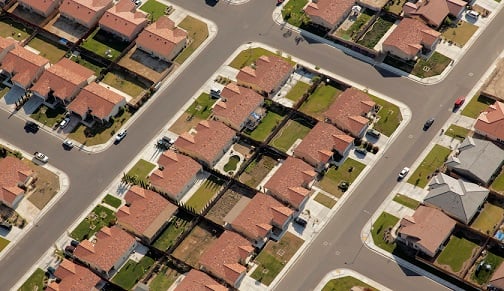As December real estate performance stats start to trickle in, we’re getting a sense of how some major markets performed in 2016

As December real estate performance stats start to trickle in, we’re getting a sense of how some major markets performed in 2016
Edmonton, Toronto and Vancouver each had their own compelling real estate stories in 2016. But how did they each perform last year?
Vancouver
Once the darling for real estate in Canada, Vancouver had a relatively tough year compared to its prior impressive performance.
Total sales reached 39,943 last year, down 5.6% year-over-year.
This year, brokers will continue to keep a close eye on sales and prices in 2017, as the impact of various housing policies continue to take effect.
“It was an eventful year for real estate in Metro Vancouver. Escalating prices caused by low supply and strong home buyer demand brought more attention to the market than ever before,” Dan Morrison, Real Estate Board of Greater Vancouver president said. “As prices rose in the first half of the year, public debate waged about what was fuelling demand and what should be done to stop it. This led to multiple government interventions into the market. The long-term effects of these actions won’t be fully understood for some time.”
Edmonton
Sales fell from 17,325 in 2015 to 16,170 last year.
But despite economic volatility, Edmonton is being credited with having a “stable” year for real estate sales.
“2016 was a steady year for real estate in Edmonton and many of the surrounding communities,” Jame Mabey, Realtors Association of Edmonton chair, said. “The ongoing economic instability certainly affected unit sales and inventory, but sale prices have continued to hold.”
Toronto
Canada’s largest city closed out 2016 as the country’s crowned king of real estate.
Sales totalled 113,133 in 2016, which was up 11.8% year-over-year. The average price, meanwhile, jumped 17.3% year-over-year to $729,922.
"A relatively strong regional economy, low unemployment and very low borrowing costs kept the demand for ownership housing strong in the GTA, as the region's population continued to grow in 2016,'' TREB president Larry Cerqua said.
Edmonton, Toronto and Vancouver each had their own compelling real estate stories in 2016. But how did they each perform last year?
Vancouver
Once the darling for real estate in Canada, Vancouver had a relatively tough year compared to its prior impressive performance.
Total sales reached 39,943 last year, down 5.6% year-over-year.
This year, brokers will continue to keep a close eye on sales and prices in 2017, as the impact of various housing policies continue to take effect.
“It was an eventful year for real estate in Metro Vancouver. Escalating prices caused by low supply and strong home buyer demand brought more attention to the market than ever before,” Dan Morrison, Real Estate Board of Greater Vancouver president said. “As prices rose in the first half of the year, public debate waged about what was fuelling demand and what should be done to stop it. This led to multiple government interventions into the market. The long-term effects of these actions won’t be fully understood for some time.”
Edmonton
Sales fell from 17,325 in 2015 to 16,170 last year.
But despite economic volatility, Edmonton is being credited with having a “stable” year for real estate sales.
“2016 was a steady year for real estate in Edmonton and many of the surrounding communities,” Jame Mabey, Realtors Association of Edmonton chair, said. “The ongoing economic instability certainly affected unit sales and inventory, but sale prices have continued to hold.”
Toronto
Canada’s largest city closed out 2016 as the country’s crowned king of real estate.
Sales totalled 113,133 in 2016, which was up 11.8% year-over-year. The average price, meanwhile, jumped 17.3% year-over-year to $729,922.
"A relatively strong regional economy, low unemployment and very low borrowing costs kept the demand for ownership housing strong in the GTA, as the region's population continued to grow in 2016,'' TREB president Larry Cerqua said.



